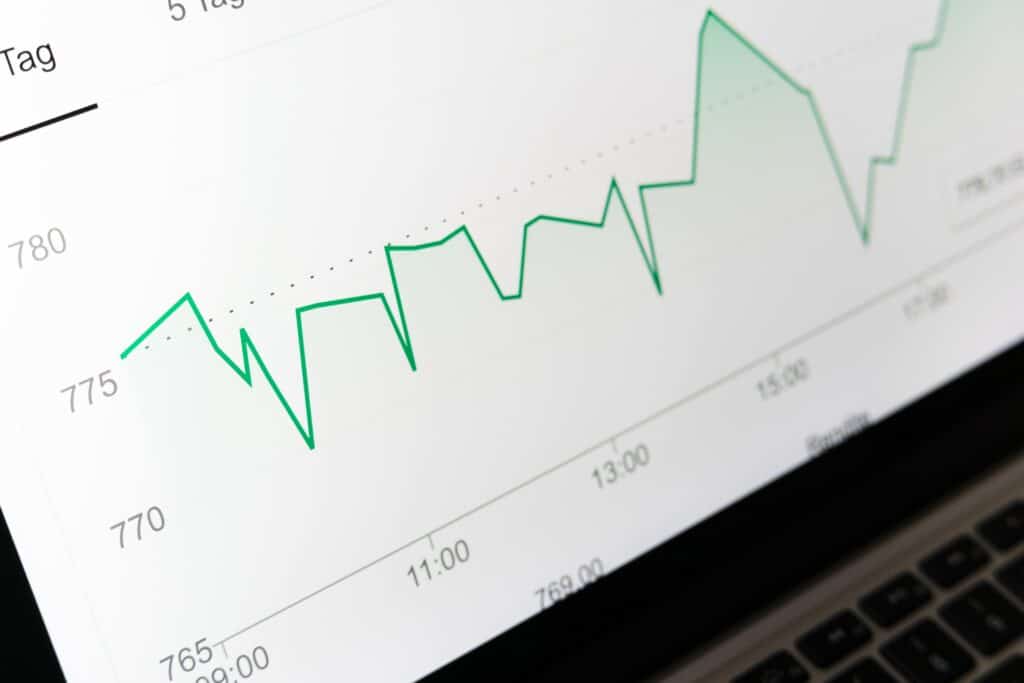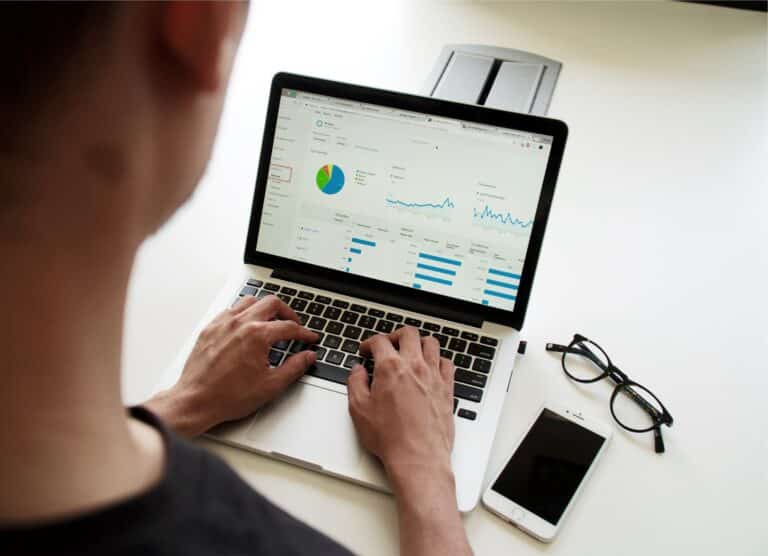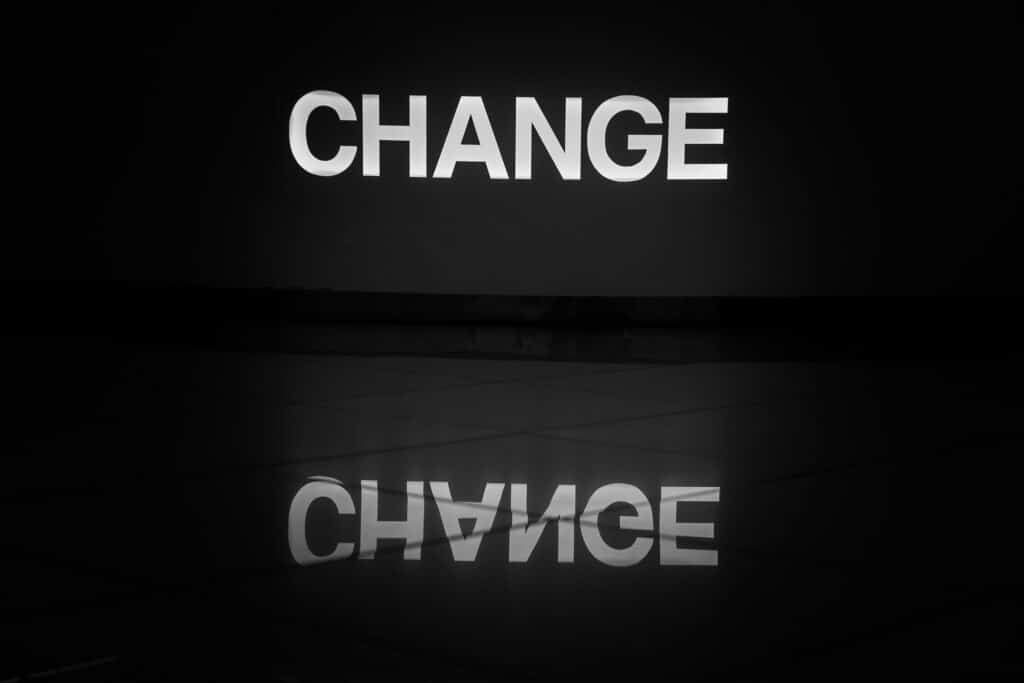Introduction
In today’s dynamic business landscape, human resources (HR) departments are increasingly relying on advanced tools to streamline their operations and boost efficiency. Among these tools, the use of analytics and dashboards stands out as a game-changer in transforming HR processes. Emphasizing the continuous application of using analytics and dashboards to monitor HR process efficiency is not merely about keeping pace with technological advancements; it’s about harnessing data-driven insights for making smarter, strategic decisions.
The Power of Data in Modern HR Practices
The crux of using analytics and dashboards in HR revolves around their capability to provide actionable insights into various HR functions. Whether it’s in recruitment, onboarding, employee engagement, or retention strategies, these tools offer a transparent view of operational strengths and weaknesses. By consistently using analytics and dashboards to monitor HR process efficiency, HR professionals can pinpoint areas of improvement, predict future trends, and base their decisions on solid, data-backed evidence.
Furthermore, the integration of analytics and dashboards in HR processes is pivotal in enhancing the overall employee experience. By regularly using analytics and dashboards to monitor HR process efficiency, organizations can ensure their HR policies and practices are not only effective but also centred around employee well-being. This approach leads to increased employee satisfaction, which in turn drives better overall performance for the organization.
In the upcoming sections, we will delve deeper into the realm of HR analytics and dashboards. We will explore how these tools have evolved over time, identify key metrics critical for monitoring efficiency, and discuss the transformative impact of implementing dashboards for real-time HR monitoring. Additionally, we will highlight best practices and strategies for effectively using analytics and dashboards to monitor HR process efficiency, and how these tools can be leveraged to address and anticipate future HR challenges. Stay tuned for an insightful journey into how these innovative tools can revolutionize your HR department’s effectiveness and contribute significantly to your business’s success.
The Evolution of HR Analytics
The journey of HR analytics has been a fascinating one, marked by significant technological advancements and evolving workforce dynamics. This evolution has been central to enabling HR professionals to use analytics and dashboards to monitor HR process efficiency effectively.
From Spreadsheets to Sophisticated Tools
Initially, HR data management was predominantly manual, often confined to spreadsheets and paper files. This method was time-consuming and prone to errors, making the monitoring of HR process efficiency a daunting task. However, as technology progressed, so did the tools available for HR analytics. The introduction of sophisticated software and platforms revolutionized how HR data was collected, analyzed, and utilized. This transition from manual to digital has been instrumental in refining the ways of using analytics and dashboards to monitor HR process efficiency.
The Advent of Predictive Analytics in HR
A pivotal moment in the evolution of HR analytics was the advent of predictive analytics. This breakthrough allowed HR professionals to forecast trends and potential issues in HR processes, further enhancing their ability to use analytics and dashboards to monitor HR process efficiency. Predictive analytics enabled a proactive approach, where HR could anticipate challenges and opportunities rather than merely react to them. This forward-looking perspective is crucial in the strategic planning and decision-making processes within HR.
Integration and Real-Time Analysis
Today, the integration of various data sources and the ability to analyze data in real-time have become essential features of HR analytics tools. Modern HR dashboards are not just about displaying data; they are about offering insights and actionable intelligence. This real-time analysis capability is key in using analytics and dashboards to monitor HR process efficiency. It allows HR professionals to make immediate adjustments and improvements, ensuring that HR processes remain agile and aligned with organizational goals.
In conclusion, the evolution of HR analytics from basic data recording to advanced, predictive, and integrative tools has been a game-changer. It has empowered HR professionals to use analytics and dashboards more effectively to monitor HR process efficiency, ultimately leading to more strategic decision-making and optimized HR operations.
Key Metrics for HR Analytics
Effective HR analytics hinges on identifying and tracking the right metrics. These metrics are the cornerstone of using analytics and dashboards to monitor HR process efficiency, offering valuable insights into various aspects of HR performance.
Employee Turnover Rates
Understanding turnover rates is crucial in assessing the effectiveness of HR processes. High turnover can indicate issues in recruitment, onboarding, or workplace culture. By using analytics and dashboards to monitor these rates, HR can identify patterns and root causes of turnover, enabling them to develop targeted retention strategies.
Time-to-Hire and Cost-per-Hire
These metrics provide insights into the efficiency and effectiveness of the recruitment process. Monitoring time-to-hire helps in understanding the agility of the hiring process, while cost-per-hire provides a measure of the recruitment cost efficiency. Using analytics and dashboards to monitor these metrics helps in optimizing recruitment strategies, ensuring they are both time-efficient and cost-effective.
Employee Engagement and Satisfaction
Employee engagement and satisfaction are key indicators of the health of an organization’s culture and HR practices. Surveys and feedback mechanisms integrated into HR dashboards provide real-time data on employee morale. By using analytics and dashboards to monitor these aspects, HR can proactively address issues, fostering a positive and productive work environment.
Training Effectiveness and Development Opportunities
Analytics can gauge the effectiveness of training programs and the availability of professional development opportunities. Tracking these metrics is vital for ensuring that employees are growing in their roles and that the training provided aligns with both individual and organizational goals.
Diversity and Inclusion Metrics
In today’s global workforce, monitoring diversity and inclusion metrics is essential. Using analytics and dashboards to track the representation of various groups within the company helps promote a more inclusive and diverse workplace.
Absenteeism and Productivity Metrics
Absenteeism rates and productivity metrics are critical for understanding workforce engagement and operational efficiency. By using analytics and dashboards to monitor these, HR can identify trends and implement measures to improve overall workforce effectiveness.
By focusing on these key metrics, HR professionals can leverage analytics and dashboards to monitor and enhance HR process efficiency comprehensively. These metrics not only provide a snapshot of the current state of HR operations but also offer insights for future improvements and strategic planning.
Omnitas Newsletter
Sign up for our monthly newsletter to stay up-to-date on our latest blog articles, videos and events!
Thank you!
You have successfully joined our subscriber list.
Implementing Dashboards for Real-Time HR Monitoring
In the realm of human resources, the implementation of dashboards for real-time monitoring has become a critical step in using analytics and dashboards to monitor HR process efficiency. These dashboards serve as a centralized platform for aggregating and visualizing key HR metrics, providing instant insights that drive informed decision-making.
Designing Effective HR Dashboards
The effectiveness of an HR dashboard lies in its design and functionality. A well-designed dashboard should be intuitive, user-friendly, and customized to meet the specific needs of the organization. It’s essential to choose metrics that are most relevant to the organization’s goals and challenges. When implementing dashboards for real-time HR monitoring, it’s crucial to ensure that they provide a clear, concise, and accurate representation of data. This clarity aids HR professionals in using analytics and dashboards to monitor HR process efficiency effectively.
Integrating Multiple Data Sources
One of the key advantages of modern HR dashboards is their ability to integrate multiple data sources, offering a holistic view of HR operations. This integration can include data from recruitment platforms, employee performance tracking systems, attendance records, and employee feedback tools. By effectively integrating these data sources, HR professionals can gain a comprehensive understanding of the workforce and use analytics and dashboards to monitor HR process efficiency in a more informed manner.
Real-Time Data for Proactive Decision Making
The real-time nature of these dashboards is what sets them apart. The ability to access up-to-date information enables HR professionals to be more proactive rather than reactive. For instance, sudden changes in employee engagement levels or spikes in turnover rates can be immediately identified and addressed. This real-time monitoring is vital for maintaining and improving HR process efficiency, as it allows for timely interventions and adjustments.
Empowering HR with Data-Driven Insights
Ultimately, the goal of implementing dashboards for real-time HR monitoring is to empower HR teams with data-driven insights. These insights enable HR professionals to strategize and implement initiatives that are aligned with both employee needs and business objectives. By continually using analytics and dashboards to monitor HR process efficiency, HR departments can evolve from being administrative to becoming strategic partners in the business.
In conclusion, the implementation of dashboards for real-time HR monitoring is a transformative step for any HR department. It not only streamlines the monitoring of HR process efficiency but also enhances the overall strategic impact of the HR function within the organization.
The Impact of Efficient HR Processes on Organizational Performance
Understanding the profound impact of efficient HR processes on an organization’s performance is essential when using analytics and dashboards to monitor HR process efficiency. Efficient HR processes not only streamline operations but also contribute significantly to the overall health and success of a business.
Enhancing Employee Productivity and Satisfaction
Efficient HR processes, as monitored and improved through analytics and dashboards, directly influence employee productivity and satisfaction. When HR processes are streamlined and responsive to employee needs, it results in a more engaged workforce. High engagement levels are often linked to increased productivity, innovation, and a positive work culture. Using analytics and dashboards to monitor HR process efficiency ensures that the organization is continually adapting and responding to the needs of its employees, thereby fostering a more productive and satisfied workforce.
Improving Recruitment and Retention
One of the key areas where HR efficiency impacts organizational performance is in recruitment and retention. Efficient recruitment processes, guided by data-driven insights from HR analytics, enable the organization to attract and retain top talent. By using analytics and dashboards to monitor metrics like time-to-hire, cost-per-hire, and employee turnover, HR can refine their recruitment strategies to be more effective and aligned with the company’s objectives. This not only improves the quality of new hires but also contributes to higher retention rates.
Driving Business Strategy with Data-Informed Decisions
Efficient HR processes play a critical role in driving business strategy. HR analytics and dashboards provide a wealth of data that can inform strategic decisions beyond the HR department. By using analytics and dashboards to monitor HR process efficiency, organizations can gain insights into workforce trends, skills gaps, and employee development needs. These insights are invaluable for shaping business strategies, and ensuring that they are supported by a strong and capable workforce.
Reducing Costs and Increasing Operational Efficiency
Another significant impact of efficient HR processes is the reduction of operational costs. Streamlined HR processes, optimized through the use of analytics and dashboards, can lead to significant cost savings. Efficient processes reduce redundancies, automate routine tasks, and improve overall operational efficiency. This not only saves time and resources but also allows the HR department to focus on more strategic initiatives.
In conclusion, the impact of efficient HR processes on organizational performance is multifaceted. By using analytics and dashboards to monitor HR process efficiency, organizations can enhance employee satisfaction, improve recruitment and retention, inform business strategy with data-driven insights, and reduce operational costs. This comprehensive approach to HR efficiency is crucial for building a robust and successful organization.
The Role of Automation and AI in HR Analytics
In the rapidly evolving field of HR analytics, the integration of automation and artificial intelligence (AI) has marked a significant leap forward. These technologies are reshaping how HR departments use analytics and dashboards to monitor HR process efficiency, offering more sophisticated, accurate, and efficient methods of data analysis.
Automation in Data Collection and Analysis
Automation plays a crucial role in streamlining HR processes. By automating routine data collection and analysis tasks, HR departments can save time and reduce the likelihood of human error. This efficiency is vital when using analytics and dashboards to monitor HR process efficiency. Automated systems can handle large volumes of data, providing real-time insights and freeing up HR professionals to focus on more strategic tasks that require human judgment and creativity.
AI-driven Predictive Analytics
AI has taken HR analytics a step further by introducing predictive capabilities. AI algorithms can analyze historical data and identify patterns that humans might overlook. This predictive analysis is crucial for using analytics and dashboards to monitor HR process efficiency, as it enables HR teams to anticipate future trends and challenges. For example, AI can predict employee turnover, helping HR to implement retention strategies proactively.
Enhancing Employee Experience with AI
AI also plays a significant role in enhancing the employee experience. AI-powered chatbots and virtual assistants can provide employees with immediate answers to HR-related queries, improving communication and satisfaction. Furthermore, AI can personalize employee experiences, such as recommending tailored training programs, thus making a significant contribution to using analytics and dashboards to monitor and improve HR process efficiency.
Ethical Considerations and Challenges
While automation and AI offer numerous benefits, they also bring ethical considerations and challenges, particularly regarding data privacy and bias. It’s important for HR departments to use these technologies responsibly, ensuring that employee data is handled securely and that AI systems are free from biases that could lead to unfair HR practices.
In conclusion, the role of automation and AI in HR analytics is transformative. By leveraging these technologies, HR departments can enhance their ability to use analytics and dashboards to monitor HR process efficiency, leading to more proactive, strategic, and employee-centric HR practices. However, it’s also crucial to navigate the ethical implications of these technologies to fully realize their benefits while maintaining trust and fairness in HR operations.

Best Practices for Using Analytics and Dashboards in HR
To maximize the benefits of using analytics and dashboards in HR, it’s important to adhere to a set of best practices. These practices ensure that HR professionals can effectively monitor and improve HR process efficiency, making informed decisions that benefit the entire organization.
Selecting the Right Tools and Metrics
The foundation of effective HR analytics lies in choosing the right tools and metrics that align with the organization’s specific needs and goals. When selecting analytics tools and dashboards, consider factors like user-friendliness, customization options, integration capabilities, and the ability to handle the required data volume. In terms of metrics, focus on those that directly impact your key HR objectives, such as employee engagement, turnover rates, and recruitment efficiency. This targeted approach is essential for using analytics and dashboards to monitor HR process efficiency effectively.
Ensuring Data Accuracy and Consistency
Reliable data is crucial for effective HR analytics. Ensure that the data fed into your HR systems is accurate, up-to-date, and consistent across all sources. Regular audits and checks can help maintain data integrity. Accurate and consistent data is a prerequisite for using analytics and dashboards to monitor HR process efficiency, as it ensures that the insights derived are trustworthy and actionable.
Training and Engaging HR Staff
For analytics and dashboards to be effective, HR staff must be adequately trained and engaged in their use. Invest in training programs that help HR professionals understand how to use these tools effectively. Encourage a culture where data-driven decision-making is valued. By equipping your team with the necessary skills and knowledge, you enhance their ability to use analytics and dashboards to monitor HR process efficiency.
Balancing Quantitative and Qualitative Insights
While analytics and dashboards predominantly provide quantitative data, it’s important to balance this with qualitative insights. Use employee surveys, interviews, and feedback to add context to the numerical data. This balanced approach enriches the process of using analytics and dashboards to monitor HR process efficiency, providing a more holistic view of HR performance.
Continuous Improvement and Adaptation
Finally, view the use of HR analytics and dashboards as an ongoing journey, not a one-time project. Regularly review and adapt your analytics strategies to reflect changes in HR priorities and business objectives. This mindset of continuous improvement is vital for keeping your approach to monitoring HR process efficiency relevant and effective.
In conclusion, by following these best practices, organizations can fully leverage the power of analytics and dashboards in HR. These practices not only streamline HR processes but also align them more closely with the organization’s overall strategy, thereby enhancing both HR and business performance.
Overcoming Common Challenges in HR Analytics
While using analytics and dashboards to monitor HR process efficiency offers numerous benefits, it also presents certain challenges. Addressing these challenges is crucial for organizations to fully realize the potential of HR analytics.
Data Privacy and Security Concerns
One of the primary challenges in HR analytics is ensuring data privacy and security. With sensitive employee information being processed, it’s vital to have robust data protection measures in place. Organizations should adhere to data protection regulations, like GDPR, and implement strong cybersecurity protocols. Regular training on data privacy for HR staff is also crucial. Overcoming this challenge is key in maintaining trust and integrity in the use of analytics and dashboards to monitor HR process efficiency.
Ensuring Accuracy and Reliability of Data
Another challenge lies in ensuring the accuracy and reliability of the data used in HR analytics. Inaccurate data can lead to misguided decisions. To address this, establish a clear data governance framework that defines data collection, storage, and analysis procedures. Regular data audits and validations should be conducted to maintain data integrity. Overcoming these accuracy and reliability issues is essential for the effective use of analytics and dashboards in monitoring HR process efficiency.
Integrating Disparate Data Sources
Often, HR data is spread across various systems and platforms, making integration a challenge. To overcome this, invest in analytics tools that offer robust integration capabilities, allowing for a unified view of data. This integration is crucial for comprehensive and accurate analytics, enabling a more effective way of using analytics and dashboards to monitor HR process efficiency.
Addressing Skills Gaps in HR Teams
A skills gap in understanding and interpreting analytics can hinder the effective use of HR dashboards. To address this, provide ongoing training and development opportunities for HR staff in data analytics and interpretation. Encouraging a culture of continuous learning and upskilling is vital for maximizing the benefits of analytics in HR.
Dealing with Resistance to Change
Resistance to change is a common challenge, particularly when introducing new technologies and practices. To mitigate this, involve key stakeholders in the planning and implementation process, and communicate the benefits of using analytics and dashboards to monitor HR process efficiency. Demonstrating how these tools can simplify tasks and provide valuable insights can help in gaining buy-in and reducing resistance.
By addressing these challenges head-on, organizations can effectively navigate the complexities of HR analytics. This proactive approach not only enhances the use of analytics and dashboards in monitoring HR process efficiency but also contributes to the overall strategic success of the HR function.
Conclusion: The Future of HR Analytics and Dashboards
As we look toward the future, HR analytics and dashboards are poised to become even more integral to organizational success. The continual advancements in technology and data science are set to offer deeper, more nuanced insights into HR processes. We can expect more personalized and predictive analytics, driven by AI and machine learning, transforming the way we use analytics and dashboards to monitor HR process efficiency.
The integration of these advanced technologies in HR analytics will likely lead to more proactive and strategic HR management. The future may also see greater emphasis on employee wellness and engagement, with analytics playing a key role in tailoring employee experiences and fostering a positive work culture. As organizations become more data-driven, the role of HR analytics in shaping business strategies and decisions will only grow in importance.
Embracing these changes and advancements is essential for any organization aiming to stay competitive and efficient in its HR practices. The future of HR is data-driven, and analytics and dashboards will be at the forefront of this transformation.
Learn More about Enhancing HR Efficiency with monday.com and Make
Are you ready to take your HR processes to the next level? Discover how monday.com and Make can revolutionize your HR analytics and dashboard capabilities. With monday.com, streamline and automate your HR workflows, enhancing efficiency and providing valuable insights into your HR processes. Meanwhile, Make offers unparalleled integration capabilities, connecting your various data sources for a comprehensive analytical view.
But don’t worry if this sounds daunting – we’re here to help! Reach out to us for a free consultation through the button below. Our experts at Omnitas are eager to assist you in getting started with monday.com and Make, ensuring you harness the full potential of these powerful tools in monitoring and enhancing your HR process efficiency. Whether you’re just beginning your journey in HR analytics or looking to upgrade your existing systems, our team is ready to guide you every step of the way.
If you enjoyed this blog article, make sure to sign up for our monthly newsletter below to stay in the loop on all things business efficiency!














